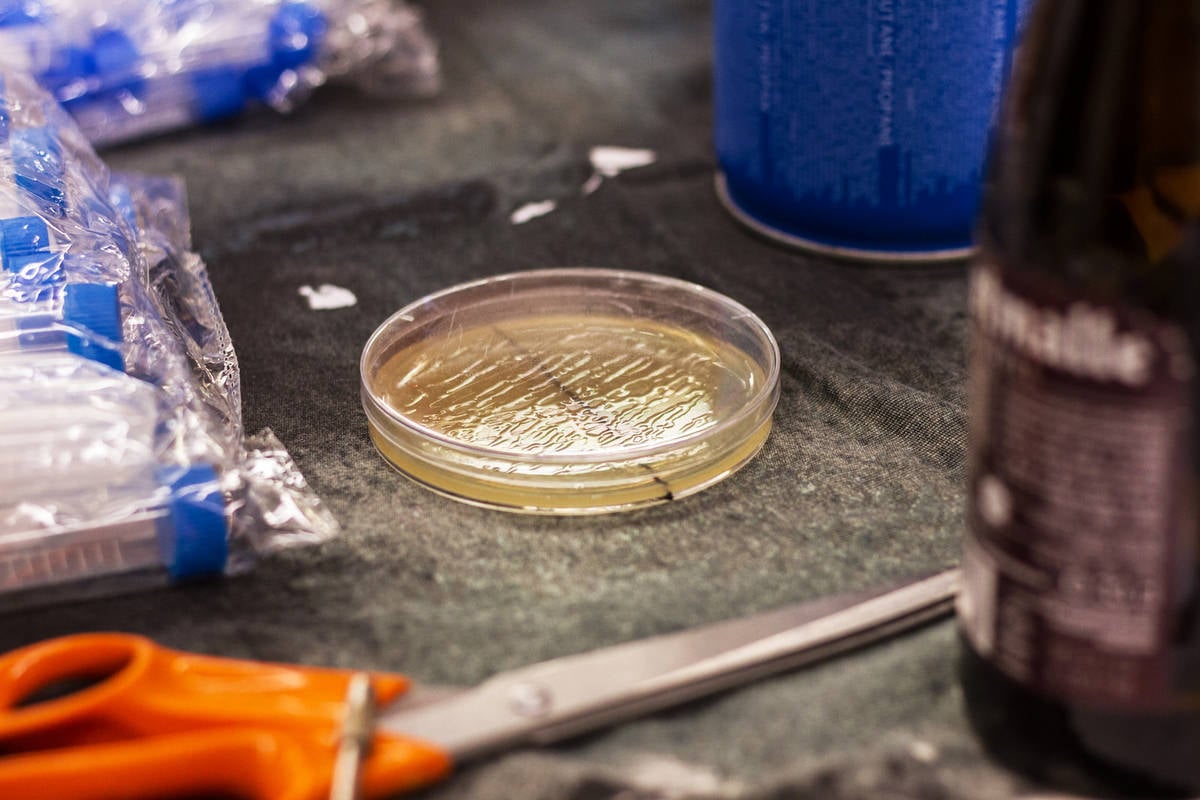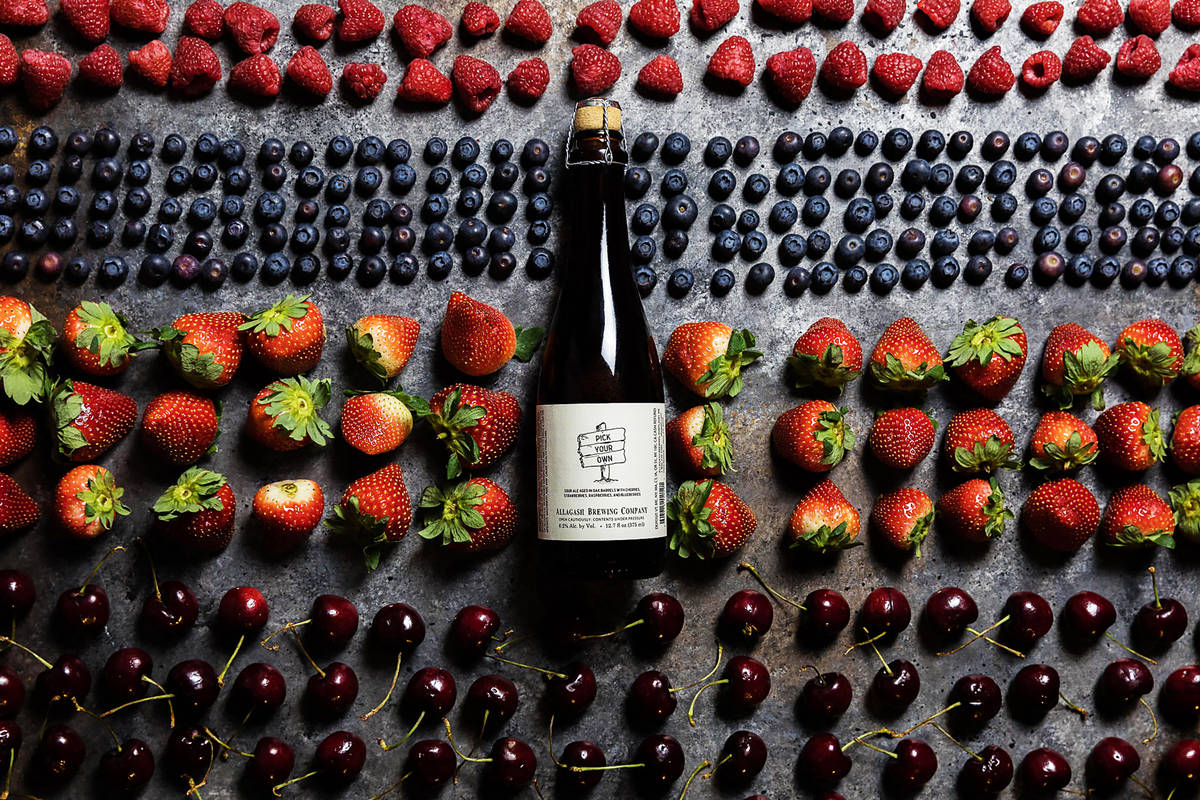Start 14-Day Trial Subscription
*No credit card required

The Difference Between Sour and Wild Ale
Sour and Wild Ales have become increasingly popular, both within The Beer Connoisseur community and without. While they have substantial differences, many beer drinkers use the terms “sour” and “wild” interchangeably, which does a disservice to each! We will delve into their areas of common ground, differences in flavor and other aspects that set them apart, and how production and fermentation processes yield distinct finished beers.
First, let’s deal with the elephant in the room: Wild Ales aren’t necessarily Sour Ales, and Sour Ales aren’t necessarily Wild Ales. What makes a Wild Ale a Wild Ale is just that – the presence of a wild yeast or some other kind of uncontrolled or atypical microflora (“bugs,” if you will). These microflora are used in addition to (or wholly in place of) traditional brewer’s yeast (Saccharomyces Cerevisiae). It isn’t necessarily a requirement that the “wild” fermenting strain be derived from the actual wild – it also can come from a pure culture of some particular bug like Lactobacillus (Lacto), Pediococcus (Pedio) or Brettanomyces (Brett). All we need is to ensure that the wort is inoculated by some means with at least one such wild strain. Sure, it’s more fun to do it the old-fashioned way, with an open vessel capturing the rampant microbiota of the night air. But if you don’t happen to live in the Zenne River Valley you can cheat and use a culture instead of hoping your local bugs will produce something good!
Now, while the introduction of a wild yeast or bacteria creates a Wild Ale, it doesn’t necessarily create a Sour Ale. That’s often the case, but it isn’t guaranteed. Some cultures generate high levels of sharp acidity, while others produce mild tartness and other secondary flavors, while others produce no sourness at all. Sometimes it isn’t even the particular bug you’re using, but rather how that bug is interacting with the other ingredients in the wort. What makes a Sour Ale is, explicitly and unsurprisingly, sourness in the form of perceivable acidity. Wild Ales and Sour Ales do overlap, but there’s more than one way to get sourness into a beer and we shouldn’t assume that it comes from a “wild” source.

While the introduction of a wild yeast or bacteria creates a Wild Ale, it doesn’t necessarily create a Sour Ale.
Photo Courtesy Flickr/FotoMediamatic
Funk and tart are fellow travelers on the same road, but they aren’t the same flavors. Which of the two are present – and which predominates – is often a function of which “wild” strain we use. If we want tart without the funk, Lacto is our best bet: it can produce some light funky notes, but it’s better-known for its ability to produce bright, sharp lactic acidity. If it’s funk we’re after, then Brett and Pedio are more likely to provide it, but their acid production is a bit more of a question mark.
Here’s a quick rundown on what these beers have in common, and where they may part ways.
Common Ground
There’s no doubt that we find a lot of common ground between Sour and Wild Ales. Modern Wild Ales often evolved from traditional sour styles like Lambic, Flanders Red or Oud Bruin, which themselves represent even older beers that were wild and/or sour because, well, we had no choice. All beer used to be wild beer, until the isolation of specific strains of yeast and improvements in cleaning and sanitation made it possible to create “clean” beer. But even once we did, there were still beer drinkers that preferred the innate complexity and rustic beauty of a good wild fermentation.
Many Wild Ales are sour. The bugs that make for Wild Ale fermentations are often producers of lactic, acetic and other acids in quantities that range from “barely there” to “there’s a hole in my tongue.” They also often share a generally “funky” flavor profile, reminiscent of hay, barnyard and horse blanket. Brett and Pedio in particular tend to kick off these flavors, in addition to fruity characters like grape or plum, smoky phenols and the buttery note of diacetyl. It is also usually the case that Wild and Sour Ales are both on the lighter side of the body spectrum. The bugs that make for Wild Ales (and which many Sour Ales share) tend to be better at breaking down and consuming the kinds of long-chain sugars that lend a beer its heft, so even stronger versions tend to lack the bulk of more traditionally-fermented beers.

Brouwerij Boon's barrel room is home to multiple world-class Belgian sours that can age for decades.
Distinct Differences
While these styles may be related, they’re certainly not twins. For one thing, not all Wild Ales are sour. For all their “wildness,” microbiota may not actually produce the kinds of sharp acidity we associate with sour beers. We also need to factor in what was added when: brewer’s yeast is a real workhorse, and can consume most of the available sugar in wort very quickly, leaving so little behind for the bugs that they can’t produce much in the way of fermentation characters – particularly sourness. Acid production can also be highly conditional, requiring additional time, ingredients or oxygen to develop. Not all Wild Ales are given the right conditions, and in such cases, Wild Ales are not likely to be sour.
Sour Ales, as noted previously, are not necessarily Wild Ales. There are any number of ways to add acid to a beer, and the “old-fashioned” way of developing it in fermentation is only one. Use of acidulated malt – a pale malt that has allowed the native Lactobacillus living on the grain itself to “pre-ferment” – can add acid. Sour mashing or kettle souring – again, allowing the native or added Lacto to get a fermentation head start before the boil – can also be used to develop tart flavors. Specialty ingredients like fruit can also add noticeable acidity and secondary tart, puckering flavors. And let’s not forget that if we want acid in a beer we can simply add acid. When my Berliner Weisse failed to yield the bright, zippy acidity expected of the style, I simply spiked it with food-grade lactic acid for instant sourness. The same trick can add sourness to beers with no unconventional microbiota, turning any beer into a sour beer. You can certainly roll the dice on a wild, open fermentation or a culture-added closed fermentation or use the bugs living in your favorite fermentation barrel, but those may not yield the sourness you’re expecting.

Some wild ales become inoculated with microflora via the use of a koelschip (or coolship), an open-air shallow vat where beer can ferment, such as this example at the famed Cantillon Brewery.
The Final Determination
So, how do you know if the beer you’re holding is a Wild Ale or a Sour Ale? You’re not going to like the answer: it isn’t necessarily one or the other.
Is it noticeably sour? Then it’s a Sour Ale. Whether it’s a traditional Sour Ale style is another question, and you can always check out the BJCP or BA Style Guidelines to see how well it stacks up!
Was it fermented with a wild bug? Then it’s a Wild Ale, whether it’s noticeably sour or not. Wild Ale, as a style category, is still in a developmental stage and lacks explicit definition in most cases.
It might also be both. In any case, I recommend taking some good notes on flavor perceptions, deciding whether you like the effect and filing that information away for the next time you’re confronted with an adventurous tap list. And don’t forget: No matter if a beer is sour or wild, the idea is to enjoy it thoroughly!

Allagash Brewing in Portland, Maine crafts numerous fruited wild ales such as Pick Your Own, brewed with blueberries, strawberries, raspberries and cherries.
Photo Courtesy Flickr/Allagash Brewing
All Photos Courtesy Flickr/Bernt Rostad unless noted otherwise




Comments